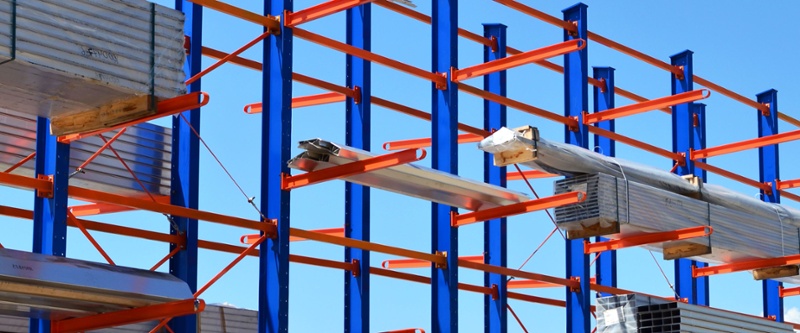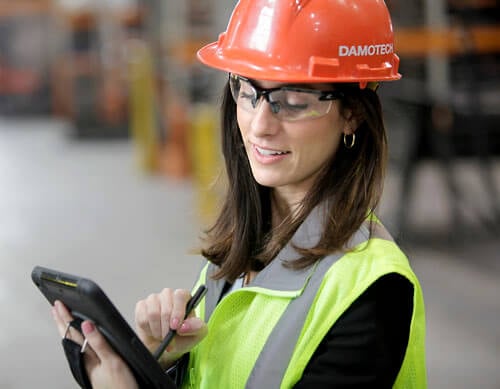Cantilevered pallet racking is a versatile solution for optimizing warehouse storage space, particularly for items that defy conventional pallet racks. These free-standing racking systems have unique functionality, offering storage for long loads, rolls, timber, beams, pipes, or steel rods. This article delves into the intricacies of cantilevered racks, offering insights into their structure, functionality, advantages, and considerations before installation.
What is cantilevered racking?
Cantilevered racking is a specialized storage system with horizontal arms designed to support lengthy or unwieldy items such as pipes, lumber, or carpet rolls. These arms are affixed to vertical columns through welds, bolts, or brackets. While unsuitable for palletized loads, cantilevered racks provide accessible and low-density storage, though they are susceptible to damage from forklifts.

Top 10 things to know about cantilevered racks
1- Base, columns, arms, and bracing
The cantilevered rack operates as a cohesive system where the base, columns, arms, and bracing work together. The steel base offers robust support, counterbalancing the weight of stored items. Vertical columns provide the main structural support, with arms extending horizontally to store inventory. Bracing enhances stability by connecting the uprights.
2- Load deflection
It refers to the amount of bending occurring between arms when they are loaded. Some deflection can occur naturally, but cantilevered pallet racking must also respect a maximum load capacity.
3- Cantilevered racks load capacity limit
Cantilevered racks have a determined capacity limit, established by the manufacturer that is usually indicated on the rack itself, providing overall column load capacity and/or individual arm load capacity.
4- Arm capacity and customization
The total weight required for each product level can be determined by dividing the total weight by the number of arms used for that specific product level. This number is calculated assuming the load will be evenly distributed from front-to-back and side-to-side. Arms can vary in capacity, be straight or inclined, and have welded end-lips to keep products from rolling off if the application requires them. Because of the many styles and capacities available for these arms, cantilever pallet racking systems are highly customizable for each application.
5- Arm spacing
It should be half the length of the stored items, leaving 1/4 of the length hanging over each end. In a rack with three upright columns, the distance between cantilever arms should be 1/3 of the product length, leaving 1/6 of the product length hanging over each end.
6- Cantilevered system stabilization
Bracing plays a pivotal role in stabilizing the cantilevered system. The size of braces, both in width and length, is determined by the size of the stored products and the specific application for which the system is designed.
7- Advantages of cantilevered racks
- They can store those items that are difficult to shelve, keeping them off the floor
- They can accommodate long or awkwardly shaped unpalletized materials
- They may have a customizable arm configuration (quantity and angle)
- They offer easy access to items as they are not very deep
8- Disadvantages of cantilevered racks
- They are more expensive to install
- They need ample aisle space to access stored materials
- They are inefficient for storing standard pallets
9- Cantilevered racks flexibility
Cantilever racks can be installed in various configurations, including single-sided or double-sided (back to back), allowing flexibility in adapting to different storage needs.
10- A great complement to standard racking
They offer an alternative to floor stacking items that are not palletized and are better adapted to storing specific items like lumber or other materials.
Key insight on cantilevered racking systems
Cantilevered racking systems offer a unique and adaptable solution for the storage of unconventional items. Their carefully designed structure, load considerations, and customization options make them valuable assets in warehouse management, especially when dealing with oversized, non-uniform, or lengthy materials. While weighing the advantages and disadvantages, the decision to invest in cantilevered racks should align with the specific storage needs and considerations of your facility.












